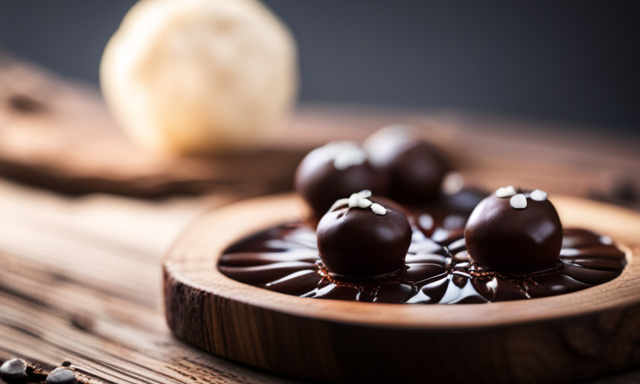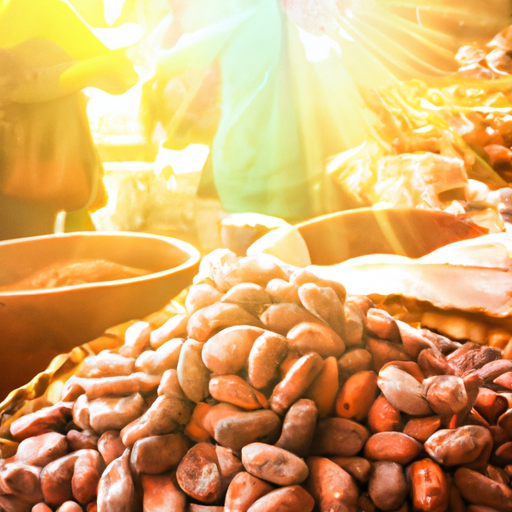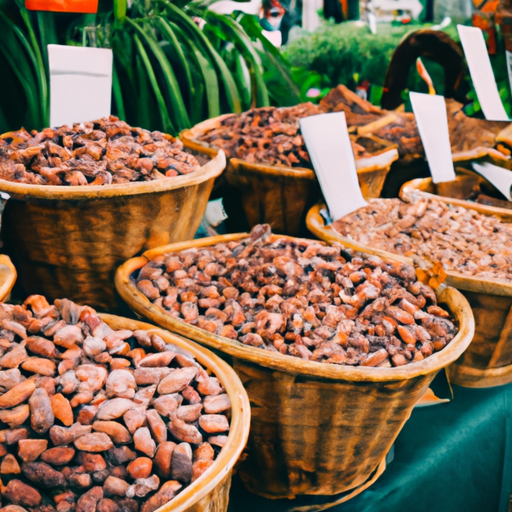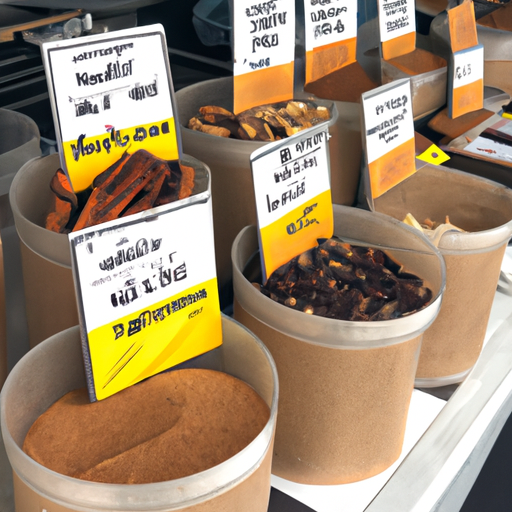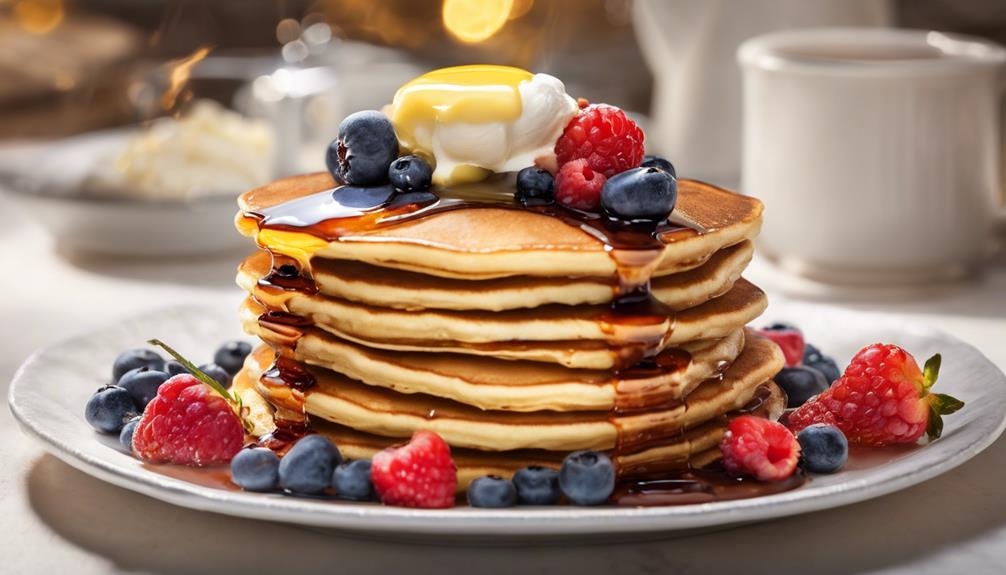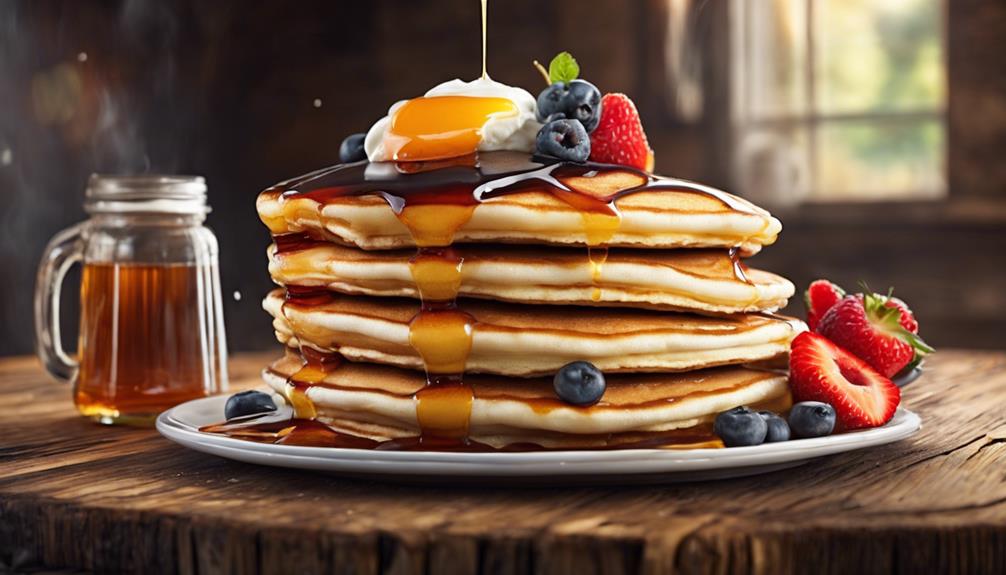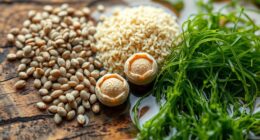Do you ever think about the amount of calories in those delicious raw cacao balls that you enjoy so much? Well, I have some great news for you!
In this article, we’ll dive deep into the nutritional value of raw cacao balls, including their calorie content. But that’s not all – we’ll also explore the various health benefits of these scrumptious treats and compare them to traditional chocolate desserts.
If you’re worried about your calorie intake, fear not! We’ll discuss some low-calorie alternatives to raw cacao balls that still satisfy your sweet tooth. Plus, I’ll share some tips on how to incorporate these delicious treats into a healthy diet.
So, get ready to learn all about the calorie content of raw cacao balls and discover how you can enjoy them guilt-free. Trust me, you won’t want to miss out on this mouth-watering information!
Key Takeaways
- Raw cacao balls contain around 100-150 calories per ball.
- They are lower in calories compared to traditional chocolate bars.
- Raw cacao balls are a nutritious and satisfying snack option.
- They can be enjoyed in moderation as part of a healthy diet.
What are Raw Cacao Balls?
If you’re looking for a delicious and healthy treat, you’ll love raw cacao balls!
Raw cacao balls are a popular snack made from simple ingredients such as raw cacao powder, dates, nuts, and seeds. These bite-sized treats are packed with flavor and offer a multitude of health benefits.
Raw cacao, the main ingredient in these balls, is known for its rich antioxidant content, which can help reduce inflammation and promote heart health. Additionally, cacao powder is a great source of magnesium, iron, and fiber.
The raw cacao recipes used to make these balls often include other nutritious ingredients like coconut oil and almond butter, making them a wholesome and satisfying snack option.
Now, let’s dive into the nutritional value of raw cacao balls and discover just how many calories they contain.
Nutritional Value of Raw Cacao Balls
Indulge yourself with the irresistible nutritional benefits found in these delectable treats made from the finest raw cacao. Raw cacao balls are not only a delicious snack, but they also offer numerous health advantages.
Firstly, raw cacao is rich in antioxidants, which help neutralize harmful free radicals in the body. Additionally, it contains essential minerals like magnesium, iron, and potassium, which support various bodily functions.
Raw cacao balls can also boost mood and energy levels due to the presence of phenylethylamine and theobromine. Moreover, they are a great source of fiber, aiding in digestion and promoting satiety.
As for recipes, you can find a wide variety of options online, from simple three-ingredient versions to more complex ones with nuts and dried fruits.
Transitioning to the next section, let’s explore the calorie content of raw cacao balls.
Calorie Content of Raw Cacao Balls
To truly savor the nutritional benefits of these delectable treats, you’ll want to be mindful of the calorie content in each raw cacao ball.
Raw cacao balls are packed with flavor and nutrients, but they can also be calorie-dense. The calorie count of raw cacao balls will vary depending on the recipe and portion size. On average, a single raw cacao ball can contain around 100-150 calories.
It’s important to note that portion size plays a crucial role in managing calorie intake. While these treats are delicious, it’s best to enjoy them in moderation to avoid consuming excessive calories.
Now that we understand the calorie content, let’s delve into the health benefits of raw cacao balls.
Health Benefits of Raw Cacao Balls
Savor the velvety richness of these delectable treats and discover the hidden gems of vitality that raw cacao balls can bring to your health.
These little delights not only satisfy your sweet tooth but also offer numerous health benefits. Raw cacao balls are packed with antioxidants, which help combat free radicals and protect your cells from damage. They are also rich in minerals like magnesium, iron, and zinc, which are essential for various bodily functions.
Additionally, consuming raw cacao balls can boost your mood and improve cognitive function, thanks to their natural compounds that stimulate the release of endorphins and serotonin.
So indulge in these guilt-free delights and reap their health benefits.
Now, let’s explore how raw cacao balls compare to traditional chocolate desserts.
Comparison to Traditional Chocolate Desserts
Discover how raw cacao balls compare to your favorite traditional chocolate desserts. There are a few key differences that can impact your weight loss efforts. Here’s what you need to know:
-
Raw cacao balls have minimal added sugars, while traditional chocolate desserts often contain high amounts of refined sugars.
-
Raw cacao balls are rich in antioxidants, reducing inflammation and supporting overall health. Traditional chocolate desserts may not offer the same level of nutritional benefits.
-
Raw cacao balls are lower in calories compared to traditional chocolate bars, making them a great option for those watching their calorie intake.
-
Raw cacao balls are made with natural ingredients, avoiding artificial additives found in some traditional chocolate desserts.
Now, let’s explore some low-calorie alternatives to raw cacao balls.
Low-Calorie Alternatives to Raw Cacao Balls
Indulge in guilt-free options that are light on your waistline and bursting with flavor. When it comes to low-calorie dessert options, there are plenty of delicious alternatives to raw cacao balls.
One option is a homemade fruit salad topped with a dollop of Greek yogurt and a sprinkle of raw cacao powder. This refreshing treat not only satisfies your sweet tooth but also provides the benefits of raw cacao powder, such as antioxidants and mood-enhancing properties.
Another option is a chia seed pudding made with unsweetened almond milk and a touch of raw cacao powder. This creamy and nutrient-rich dessert is a great way to incorporate raw cacao into your diet while keeping your calorie intake in check.
So, why settle for high-calorie desserts when you can enjoy these low-calorie alternatives?
Now let’s move on to some tips for incorporating raw cacao balls into a healthy diet.
Tips for Incorporating Raw Cacao Balls into a Healthy Diet
Boost your health and happiness by incorporating these delectable treats into your daily routine, because who needs boring old dessert when you can have raw cacao balls?
When it comes to enjoying raw cacao balls as part of a healthy diet, portion control is key. Although they are nutrient-dense and packed with antioxidants, they are also calorie-dense. To avoid overindulging, try portioning out a small serving size, such as one or two balls, and savoring them slowly.
Additionally, get creative with your recipes using raw cacao balls! Blend them into smoothies, sprinkle them on top of yogurt or oatmeal, or even use them as a topping for acai bowls. These versatile treats can add a rich chocolatey flavor to any dish.
So, enjoy raw cacao balls in moderation and continue reaping their health benefits.
Enjoying Raw Cacao Balls in Moderation
Now that you know some tips for incorporating raw cacao balls into a healthy diet, let’s talk about enjoying them in moderation.
While raw cacao balls can be a delicious and nutritious addition to your diet, it’s important to remember that they are still calorie-dense. Each ball can contain around 100-150 calories, depending on the size and ingredients used.
Enjoying them in moderation allows you to reap the benefits of their antioxidants, magnesium, and other nutrients without going overboard on calories. It’s all about finding a balance and being mindful of your portion sizes.
One way to do this is by savoring each bite and truly enjoying the flavors and textures. So, go ahead and indulge in these health-conscious treats, but remember to do so in moderation.
In the next section, we’ll wrap up our discussion and conclude with why raw cacao balls are such a delightful and nutritious indulgence.
Conclusion: Indulge in Delicious and Nutritious Raw Cacao Balls
In conclusion, treating yourself to these delectable and nourishing bites of heaven will leave your taste buds dancing with delight and your body thanking you for the wholesome goodness.
Raw cacao balls are not only delicious but also packed with nutrients that can benefit your overall health.
When is the best time to consume these delightful treats? Well, the answer is whenever you crave them! Whether it’s for breakfast, as a snack, or even as a dessert, raw cacao balls can be enjoyed at any time of the day.
As for different recipes, there are countless variations available. Some popular choices include adding nuts, dried fruits, or even a hint of sea salt for a unique twist. Experimenting with different ingredients can help you find your perfect raw cacao ball recipe.
So go ahead, indulge guilt-free in these nutritious treats and reap the benefits of their rich flavors and health benefits.
Frequently Asked Questions
Can I substitute raw cacao balls for regular chocolate in baking recipes?
Yes, you can substitute raw cacao balls for regular chocolate in baking recipes. Raw cacao balls are a healthier option as they contain more nutrients and antioxidants, providing numerous health benefits.
How can I store raw cacao balls to maintain their freshness?
To keep raw cacao balls fresh, store them in an airtight container in a cool, dark place. Avoid exposing them to moisture or heat, as this can affect their quality. This will help maintain their deliciousness and extend their shelf life.
Are there any potential side effects or risks associated with consuming raw cacao balls?
There are potential health benefits to consuming raw cacao balls, but it’s important to be aware of potential side effects. It is recommended to consume them in moderation, following the recommended serving size to avoid any risks.
Can raw cacao balls be part of a weight loss diet?
Raw cacao balls can be part of a weight loss diet when consumed in moderation as part of a balanced eating plan. They are low in calories and have a low glycemic index, which means they won’t spike blood sugar levels.
Are raw cacao balls suitable for people with certain dietary restrictions, such as gluten-free or vegan diets?
If you have dietary restrictions like gluten-free or vegan, there are gluten-free options and vegan alternatives available for raw cacao balls. They can be a suitable choice for you.
Are Raw Vegan Cacao Cashew Pies Healthier Than Raw Cacao Balls?
Yes, the calories in raw vegan pie are typically higher than those in raw cacao balls. This is mainly due to the addition of cashews and other ingredients to create the pie’s base. However, both options can be a healthier alternative to traditional desserts due to their raw, vegan, and nutrient-dense ingredients.
Conclusion
In conclusion, indulging in delicious and nutritious raw cacao balls is a guilt-free pleasure. These delectable treats not only satisfy your sweet tooth, but they also provide numerous health benefits.
With their low-calorie content and high nutritional value, raw cacao balls are a great alternative to traditional chocolate desserts. Incorporating them into a healthy diet is easy, and you can enjoy them in moderation without any guilt.
So go ahead, treat yourself to these delightful balls of goodness and experience the joy of guilt-free indulgence.

